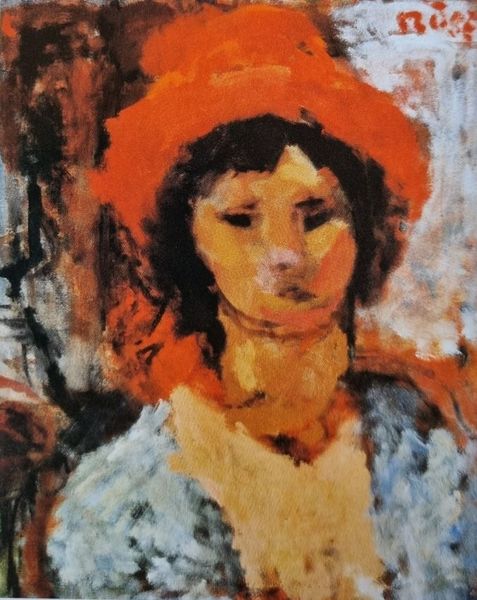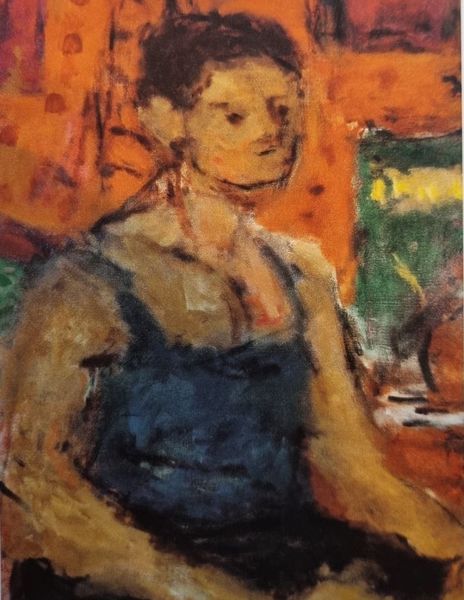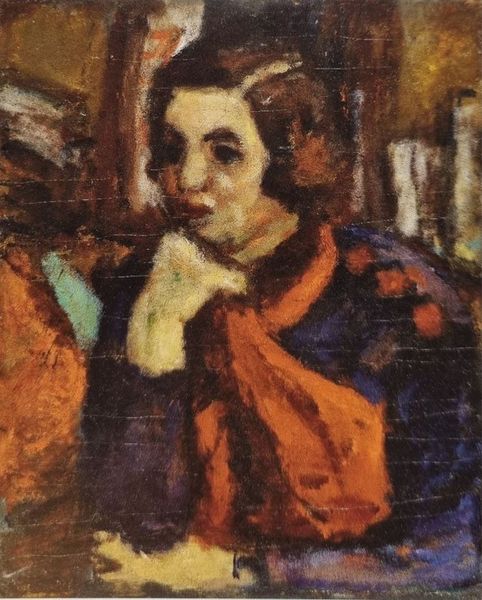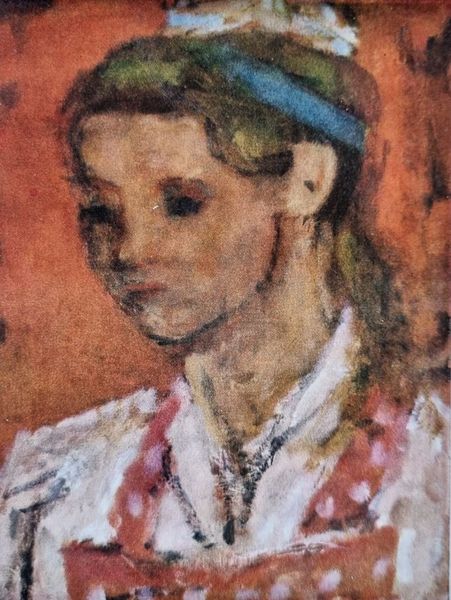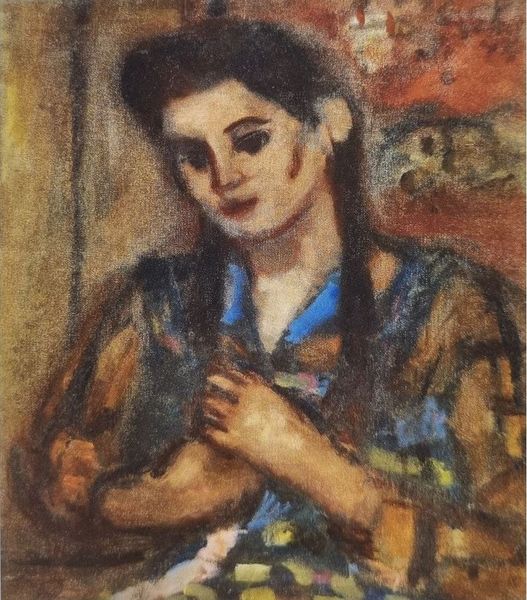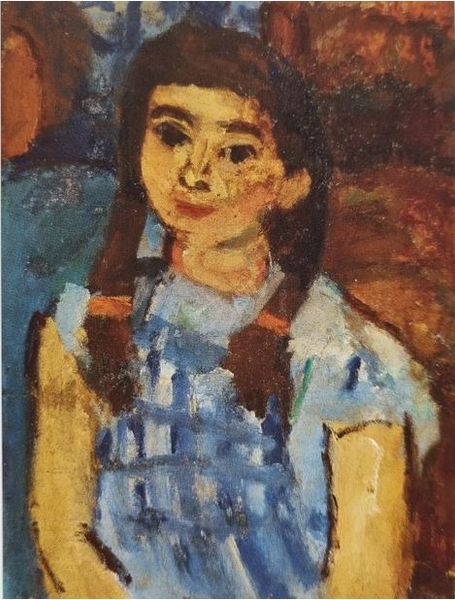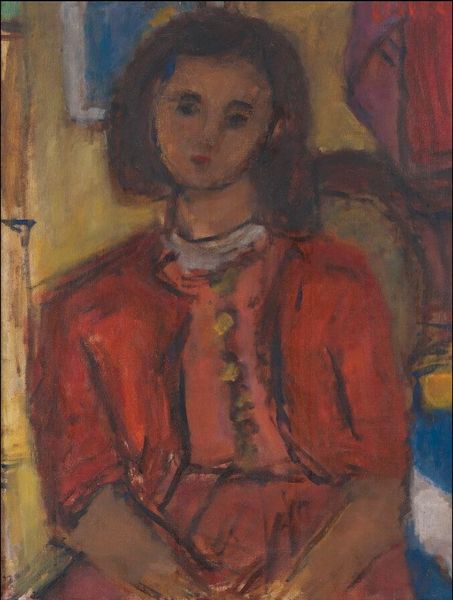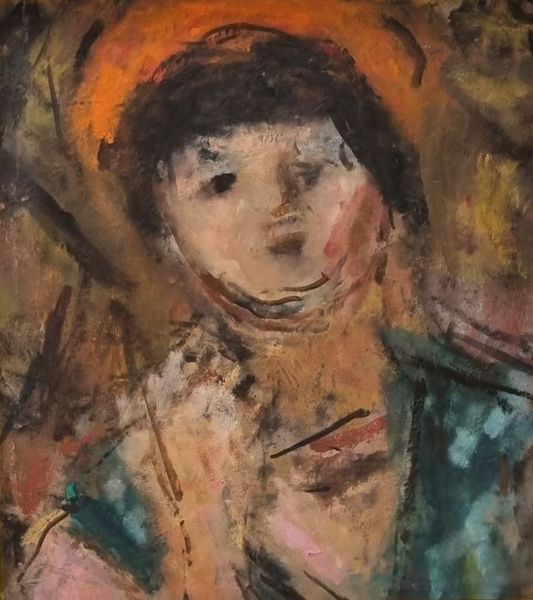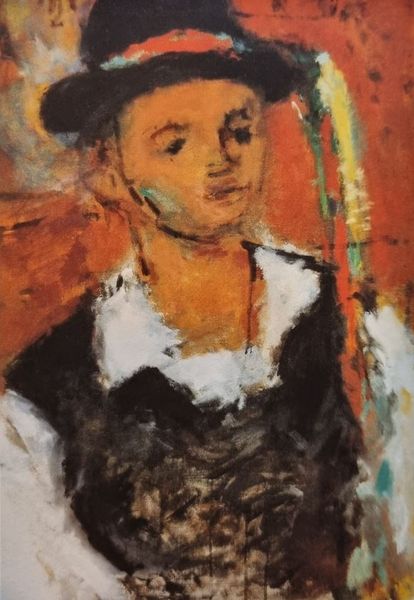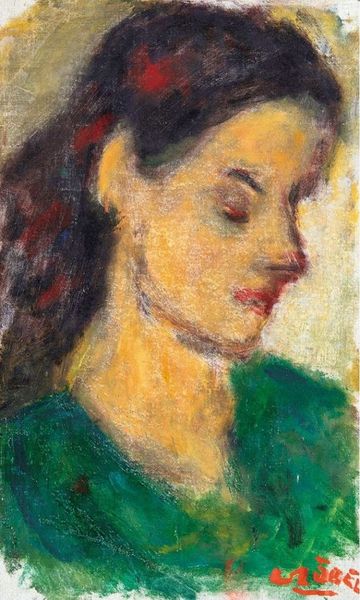
Copyright: Bela Czobel,Fair Use
Curator: This is Bela Czobel’s “Györgyike,” created in 1974 using oil on canvas. Editor: Immediately, I’m struck by the colour palette and its overall muted tone, that juxtaposes vibrant yellows and blues and rich reds with sombre facial expression. It feels intimate but also melancholy. Curator: Indeed, Czobel was a key figure in Hungarian modernism. His practice deeply investigated expressionistic and figural studies; during that era, his artworks embodied themes central to the individual's experience, especially during times of profound political upheaval and social change, a reaction against social realism's influence. Editor: Absolutely, you can trace that emotionality in the thick application of oil paint, the impasto really gives texture and depth. And consider how he handles composition, where you have dynamic balance using triangles of color, where it all converges to give form, structure. There’s an immediacy to his form that creates depth that asks a viewer to actively participate in the construction of a subjective understanding, in a kind of conversation, I might add. Curator: But the conversation here extends far beyond mere form. Consider Czobel's exile from Hungary during World War II and how these exilic circumstances deeply influenced not only the artist's perception of his relationship to place and time, and sense of dispossession, all so strongly expressed in his mature portraits such as this. Editor: An exile made visual by his subjective handling of light, color, and emotion. One that speaks of cultural production of visual art under historical, material and societal constraint, if you consider Europe and his studio practice at that time. Curator: A complex interpretation that, regardless, draws viewers in as observers with personal interpretations shaped by how they interact with form or even material; a cultural echo to Bela Czobel, one perhaps never expected or intended by the artist at all. Editor: So we engage visually and intellectually, reflecting and interpreting not only artistic and critical insights into his artistic work but also insights related to our own values and histories.
Comments
No comments
Be the first to comment and join the conversation on the ultimate creative platform.
